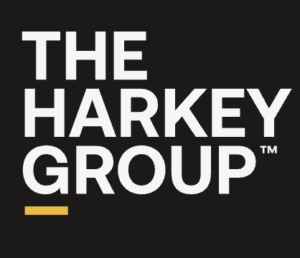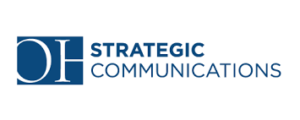Reviving legacy company’s identity — Robert Ferguson // SAP
- Part 1True transformation beyond the brand — Robert Ferguson // SAP
- Part 2 Reviving legacy company’s identity — Robert Ferguson // SAP
Show Notes
-
01:44How do you rebrand a company thats over 50 years old?Whether it's a 150-year company or a startup moving from founder-led to a broader entity, the pain points are very similar, and the brand identity issues are real. How do you rebrand?
-
02:36How high does the approval for a rebrand of a legacy company have to go?It goes all the way to the board and requires that level of involvement, even for something as trivial as the width of a logo.
-
03:27Where are brand strategists getting it wrong?The need to want to change something without considering if there is a scenario planning where we don't change something and redefine, or we re-educate ourselves on how we're leveraging it or using it.
-
06:05Why you have to put up guardrails when rebranding a legacy brandPutting up guardrails as you go through the process is essential. You don't want the market or necessarily people to decide the direction you need to go as a business, but it is an essential step, especially with legacy companies, to bring people along in the journey, making sure they feel heard and understood.
-
09:11The challenge of balancing perspectives from the front lines to the founders or key stakeholders of legacy brandsThe challenge for brand strategists working on legacy brands is balancing the new direction the company has to go with the founders' vision in such a way that it breeds collaboration and not conflict.
-
12:21Legacy companies are so large with many different pieces. How do you align everything to get to a single brand truth?When you have to rebrand a legacy company, it is often because it has lost its way, and so despite its many facets, you achieve alignment by returning to the basics.
-
14:28Making the business case for Rebranding a legacy companyIts about knowing and talking about the impact on revenue in a narrative that the C-suite can understand immediately, including a slide for risk and reward.
Quotes
-
"SAP has been around for 50 years; from a technology standpoint, that is ages. While working in management consulting, I did a lot of work with DuPont and tried to rebrand a 150-year organization. And the pain points are very similar to a startup that has gone from founder-managed and led to a broader entity, and what does that look like? And how do we rebrand? Each brand identity or legacy challenge is real" - Robert Ferguson
-
"You will always find the answer you want in the market if you search in your data. Often a quick mistake is finding that data quickly and then charging up that hill as a brand strategist. You're so excited about the change that sometimes you find the data quickly and then charge to change something. I have had experiences where we had to stop and understand, do we need to change it. Is there a scenario planning where we don't change something and redefine, or we re-educate ourselves on how we're leveraging it or using it?" - Robert Ferguson
-
"Returning to this idea of legacy, putting up guardrails as you go through the process is essential. And I think a lot of that comes in making sure you have those checks and balances of who you're communicating with; I will talk to if it's a legacy company, we will talk to people who've been there 30 plus years, we'll talk to employees who've been there just recently, we'll talk to partners in the marketplace, and try to be as objective as possible." - Robert Ferguson
-
"You don't want the market or necessarily people to decide the direction you need to go as a business. It's crucial, especially as a legacy brand, when you know there needs to be a shift in the marketplace." - Robert Ferguson
-
"Generally, if you go and ask a lot of people, there's a lot of nostalgia because people don't want to make a change. And so, there'll be many things that people can hold on to. So it's vital as a strategist when you're coming to empathize with that right. And although change is going to happen, and you know, it needs to happen. I think an essential step, especially with legacy companies, is bringing people along in the journey, making sure they feel heard and understood." - Robert Ferguson
-
"The challenge sometimes is when you get into this world where the founders are still around but no longer driving the business. It becomes a challenge to balance their vision with this new direction that the company needs to go, especially if it's moved by people who are at the front lines and understand that we do need to make these changes." - Robert Ferguson
-
"A big part of being a brand strategist within an organization, mainly or even as an agency, is it comes to being a collab bringing everyone together and helping share all those perspectives." - Robert Ferguson
-
"When we rebrand legacy companies, they've lost their way or grown too much. And we have to go back to the basics of why we started this company in the first place. What exactly were we achieving? And much of it is returning to that origin story." - Robert Ferguson
-
"If you take the business side of the brand and can communicate effectively when you come into your boardroom, talk dollar signs, right? Let's talk about the impacts on revenue. Let's not talk about KPI; whatever my NPS score is correct, whatever that brand matrix is, it will not lend. I think the more that we can elevate and conversate about ultimately what we're doing to drive, whether it's revenue, whether it's to bolster shareholder programming, whatever it is, I think putting it in a vocabulary and or in language, or a narrative that they will understand is 90% of the battle." - Robert Ferguson
-
"Simply having a risk-reward on the slide to show people you thought through as any analyst or find out what the risks of doing this are and showing that we've thought through those. We're not just about the creativity of the idea, but framing it in a way that they communicate and their day-to-day is incredibly impactful in getting their buy-in." - Robert Ferguson,
- Part 1True transformation beyond the brand — Robert Ferguson // SAP
- Part 2 Reviving legacy company’s identity — Robert Ferguson // SAP
Up Next:
-
Part 1True transformation beyond the brand — Robert Ferguson // SAP
Too often, people approach brand building or rebranding from the outside, thinking it is all about being customer-centric. That's only one of the three truths of brand transformation, and it is not the most critical. What does it mean to transform a brand, and what is the most critical thing to remember, irrespective of company size? Listen to Robert Ferguson, Senior Director of Brand Strategy at SAP, as he discusses true brand transformation.
Play Podcast -
Part 2Reviving legacy company’s identity — Robert Ferguson // SAP
Brands, no matter how old, miss their way, and when they do, how do you revive their identity? How high does the approval go, and what guardrails do you need to implement? And more importantly, how do you make the business case for it to the C-suite? Listen to Robert Ferguson, Senior Director of Brand Strategy at SAP, as he discusses reviving a legacy company's identity.







